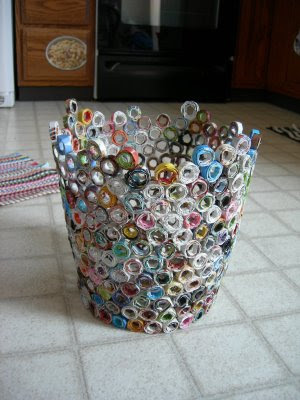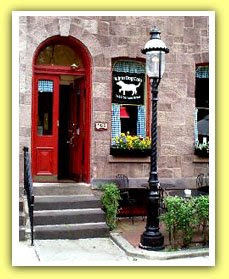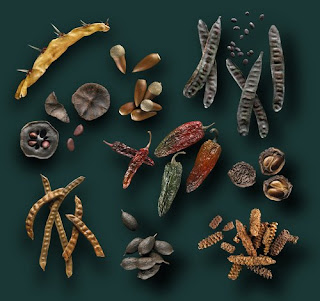 The primary threads I would describe as 1) Sustainability, 2) Sustenance & 3) Social Justice. I did some counting and came up with some interesting statistics on these main themes of my posts this last nine months. This kind of rethinking, rereading led me to revising my many into a somewhat simpler list.
The primary threads I would describe as 1) Sustainability, 2) Sustenance & 3) Social Justice. I did some counting and came up with some interesting statistics on these main themes of my posts this last nine months. This kind of rethinking, rereading led me to revising my many into a somewhat simpler list.Even though sustainability is the purpose of make-a-(green)plan blog, I find that including the ‘food’ category within sustenance rather than sustainability makes these three a more even split. The food category is the largest and I will look at that tomorrow. Loosely, I saw the sustainability thread as those posts that do feed me. They most often speak to my essence, my spirit, my creativity. I included square footage and floor plans because my years of interiors work mean I think in these terms. For another person, this would be a different category. For me, seeing a built environment that is not functioning well is like an itch that needs to be scratched.
 The things that feed my soul and body . . . including some force feeding. I try and push myself out of my comfort zone, around the world and outside my limits. From the perspective of an ascetic, these are the things that keep me going from within and from guidance outside myself. These posts are also in the other two threads. Let me repeat, these are loose categories as I fear I could get mesmerized by the process of cataloging if I let myself. Step away from this list, Kate.
The things that feed my soul and body . . . including some force feeding. I try and push myself out of my comfort zone, around the world and outside my limits. From the perspective of an ascetic, these are the things that keep me going from within and from guidance outside myself. These posts are also in the other two threads. Let me repeat, these are loose categories as I fear I could get mesmerized by the process of cataloging if I let myself. Step away from this list, Kate.- 4 elements (1)
- Path to Freedom (4)
- Transition Town (4)
- Floor Plans (7)
- Music (7)
- Square Footage (9)
- Why (14)
- Art (16)
- Found Objects (17)
- Love (17)
- DIY (19)
- International (20)
- Guidance - Inspiration (32)
- Design (33)
- comic relief (41)
- Video Education (44)
 Sustainability is the largest focus. I have deliberately not absorbed some of these smaller categories because they are important search words. For instance, worms and toilet are things many people are really curious about in a love / hate sort of way. These were the kinds of tags I searched in No Impact Man or Chile Chews (to name just two) before I started my own blog. I eliminated the tags to all of these green blogs except for Path to Freedom. The Dervaes Family is more a total movement these days. I would direct anyone to that site for a one stop shop, an excellent resource. I link within my posts to my favorites, the more popular green sites as each comes up. If I blog another year I might develop a blog list that I can showcase better, yet maintain and keep current and refreshed.
Sustainability is the largest focus. I have deliberately not absorbed some of these smaller categories because they are important search words. For instance, worms and toilet are things many people are really curious about in a love / hate sort of way. These were the kinds of tags I searched in No Impact Man or Chile Chews (to name just two) before I started my own blog. I eliminated the tags to all of these green blogs except for Path to Freedom. The Dervaes Family is more a total movement these days. I would direct anyone to that site for a one stop shop, an excellent resource. I link within my posts to my favorites, the more popular green sites as each comes up. If I blog another year I might develop a blog list that I can showcase better, yet maintain and keep current and refreshed.
- Climate Change (3)
- Air (4)
- Solar (5)
- Appliances (6)
- Toilet (6)
- Wormery (6)
- Cloth (7)
- Trash (9)
- Riot for Austerity (10)
- Cleaning (12)
- Consumer Goods (13)
- Energy (14)
- Garden (14)
- Purging (14)
- Peak Oil (15)
- Water (17)
- Free (21)
 Organization is a key issue. For one thing, I found that the alphabet structure was as good as any other to organize my thoughts, my posts. But the 4 elements started out as a counter-note but almost immediately began to feel just too arbitrary. It was a literary conceit by design, but it was just not affective. I also saw that early last year I was reading more on fat acceptance, but this wasn’t sustained as a primary theme. I have subsequently absorbed this into the feminist and human rights category. This last category I named ‘social justice’ is clearly a powerful aspect of my life. I had no idea I would be blogging as often as I have on this thread. It is not something I am able to compartmentalize as it turns out. My feminism is an intrinsic part of my every thought. It has to be. We live in a patriarchy and misogyny is everywhere. I would love it if I never had to address another human rights abuse in my life. But, of course that won’t happen.
Organization is a key issue. For one thing, I found that the alphabet structure was as good as any other to organize my thoughts, my posts. But the 4 elements started out as a counter-note but almost immediately began to feel just too arbitrary. It was a literary conceit by design, but it was just not affective. I also saw that early last year I was reading more on fat acceptance, but this wasn’t sustained as a primary theme. I have subsequently absorbed this into the feminist and human rights category. This last category I named ‘social justice’ is clearly a powerful aspect of my life. I had no idea I would be blogging as often as I have on this thread. It is not something I am able to compartmentalize as it turns out. My feminism is an intrinsic part of my every thought. It has to be. We live in a patriarchy and misogyny is everywhere. I would love it if I never had to address another human rights abuse in my life. But, of course that won’t happen.
- Iraq (4)
- Shakesville (14)
- Economics (16)
- Human Rights (16)
- Money (18)
- Myths America (19)
- Activism (26)
- Feminism (27)
- Politics (42)
Now that I have a way to think about these past offerings, I will be able to fill in the blanks. Comments are welcome.







































